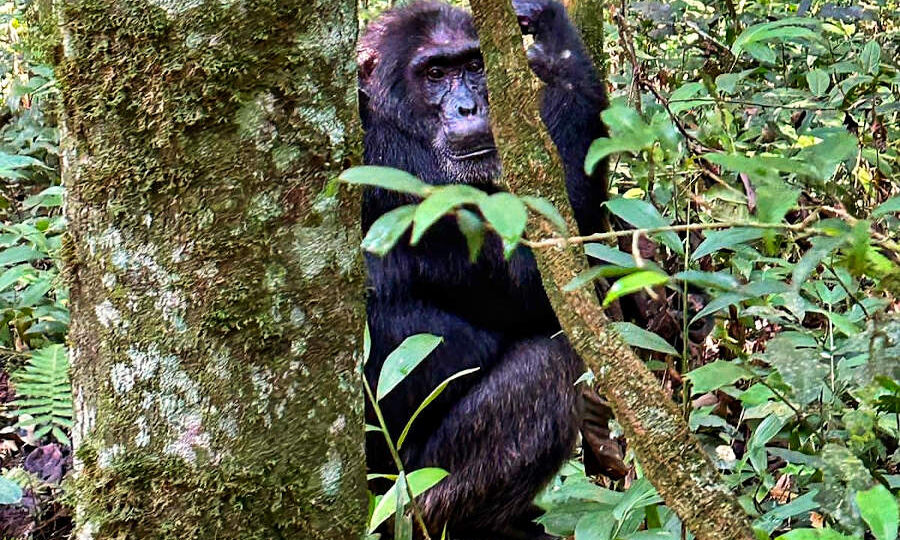
Chimpanzee trekking offers an extraordinary opportunity to witness the captivating lives of our closest relatives in the animal kingdom. However, as we venture into their habitats, it is crucial to uphold ethical standards and responsible behavior to ensure the well-being of the chimps and the conservation of their natural environments. Chimpanzee trekking etiquette encompasses a range of practices aimed at respecting wildlife and preserving primate habitats. By adhering to these guidelines, we can contribute to the sustainability of chimpanzee tourism and the protection of these remarkable creatures.
Understanding Chimpanzee Behavior and Habitat
Before embarking on a chimpanzee trekking adventure, it is essential to familiarize oneself with the behavior and habitat of these intelligent primates. Chimpanzees are highly social animals, living in complex communities led by alpha males and exhibiting a wide range of behaviors, including grooming, hunting, and communication through vocalizations and gestures. Their habitats, typically dense forests and woodlands, provide them with food, shelter, and crucial resources for survival.
Minimizing Human Impact
One of the primary objectives of chimpanzee trekking etiquette is to minimize the impact of human presence on these sensitive ecosystems. To achieve this, tour operators and visitors must adhere to designated trails and guidelines established by wildlife authorities. Staying on designated paths helps reduce soil erosion, minimizes disturbance to wildlife, and prevents damage to delicate plant life.
Respecting Chimpanzee Space
Respecting the personal space of chimpanzees is paramount during trekking encounters. While it is exhilarating to observe these magnificent creatures up close, it is essential to maintain a respectful distance to avoid causing stress or agitation. Chimpanzees, like all wildlife, deserve to roam freely in their natural environment without feeling threatened or harassed by human presence.
Practicing Responsible Photography
Photography plays a significant role in documenting and appreciating the beauty of chimpanzees and their habitats. However, photographers must exercise restraint and mindfulness to ensure that their actions do not disrupt the natural behavior of the animals. Using non-intrusive photography equipment and avoiding flash photography are essential practices to prevent startling or disturbing the chimpanzees.
Limiting Group Size
Limiting the number of visitors per trekking group helps reduce the collective impact on chimpanzee habitats and minimizes disturbance to the animals. Smaller groups are less likely to overwhelm the chimpanzees and are better able to maintain a respectful distance while observing their natural behaviors. By keeping group sizes small, tour operators can prioritize the quality of the experience while safeguarding the well-being of both visitors and wildlife.
Respecting Wildlife Viewing Hours
Chimpanzees, like many other wildlife species, have natural rhythms and behaviors that coincide with specific times of the day. Respecting designated wildlife viewing hours established by wildlife authorities ensures that encounters with chimpanzees occur at times when they are most active and least likely to be disturbed. By adhering to these guidelines, visitors can maximize their chances of observing chimpanzees engaging in their natural behaviors while minimizing disruptions to their daily routines.
Supporting Sustainable Tourism Practices
Participating in chimpanzee trekking activities contributes to local economies and conservation efforts in the regions where these experiences are offered. It is essential for visitors to choose reputable chimpanzee tour operator and conservation organizations that prioritize sustainable tourism practices and reinvest a portion of their proceeds into wildlife protection and habitat conservation initiatives. By supporting responsible tourism, visitors can play a vital role in ensuring the long-term viability of chimpanzee trekking as a conservation tool.
Advocating for Habitat Conservation
Preserving the habitats of chimpanzees and other wildlife species is crucial for their survival and well-being. Visitors can become advocates for habitat conservation by supporting organizations and initiatives dedicated to protecting natural ecosystems, combating deforestation, and promoting sustainable land management practices. By raising awareness and mobilizing resources, individuals can contribute to the preservation of chimpanzee habitats for future generations to enjoy.
Conclusion
Chimpanzee trekking etiquette encompasses a set of principles and practices aimed at respecting wildlife and preserving primate habitats. By understanding chimpanzee behavior, minimizing human impact, respecting chimpanzee space, practicing responsible photography, limiting group size, respecting wildlife viewing hours, supporting sustainable tourism practices, and advocating for habitat conservation, visitors can contribute to the sustainability of chimpanzee tourism and the protection of these remarkable creatures. By adhering to these guidelines, we can ensure that future generations have the opportunity to experience the wonder of chimpanzees in their natural habitats while promoting their long-term survival and well-being.





